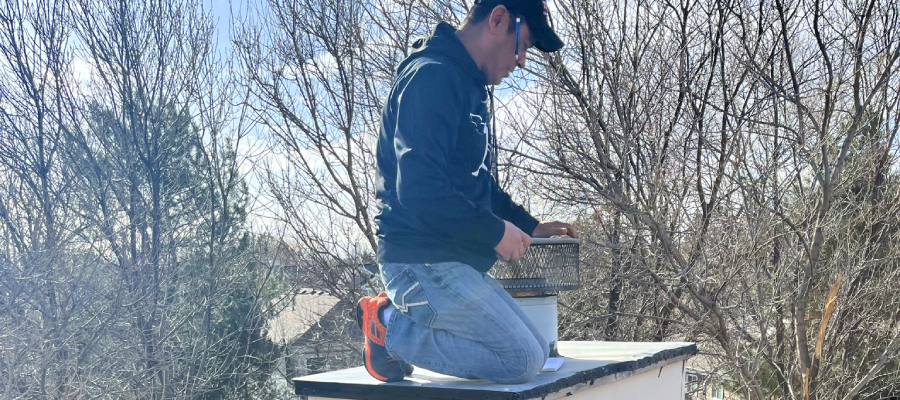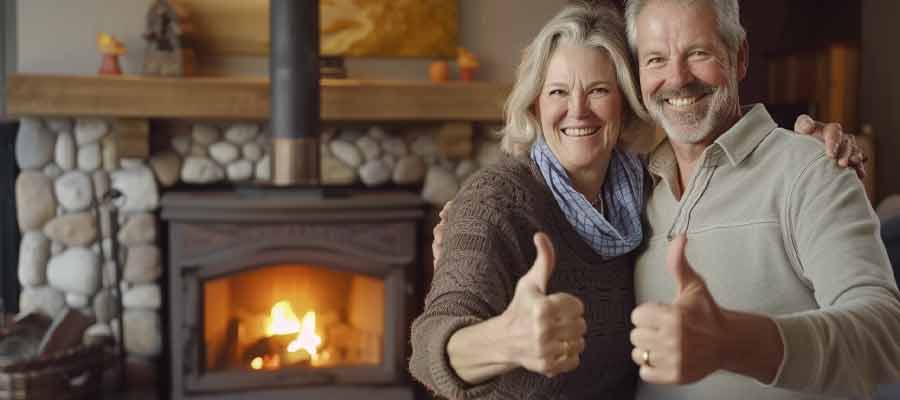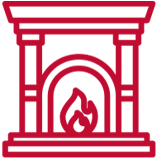A firebox is the heart of your fireplace, enduring intense heat and frequent use. To ensure it remains in top condition and provides warmth and ambiance for years to come, regular maintenance and care are crucial. Here’s a comprehensive guide on how to extend the life of your firebox.
Understanding Your Firebox
The firebox is the chamber where the fire burns, usually made from refractory bricks, metal, or cast iron. Its primary function is to contain the fire and protect the surrounding structure from heat and flame. Understanding its components and how it operates is the first step in ensuring its longevity.

Regular Cleaning and Maintenance
1. Routine Cleaning
Ashes and soot build-up can cause damage over time. After each use, allow the firebox to cool completely before cleaning out the ashes. Use a metal scoop to remove the ash and a brush to sweep away soot. An ash vacuum can be particularly useful for thorough cleaning.
2. Annual Inspection
Schedule an annual inspection with a certified chimney professional to check for cracks, gaps, or any signs of wear and tear. This will help catch minor issues before they become major problems.
3. Deep Cleaning
Once a year, deep clean your firebox. This involves removing all soot, creosote, and residue. Use a stiff brush and a fireplace cleaner to scrub the interior. Ensure you’re using cleaners appropriate for your firebox material.

Protecting Your Firebox from Heat Damage
1. Use Proper Fuel
Burn only seasoned hardwoods in your fireplace. Unseasoned wood, treated wood, or artificial logs can produce excessive smoke and creosote, which can damage the firebox. Softwoods, like pine, burn too quickly and generate more creosote.
2. Avoid Overloading
Overloading your firebox with too much wood can lead to excessive heat and damage the firebox walls. Maintain a moderate fire size to ensure even burning and reduce strain on the firebox.
3. Install a Fireback
A fireback is a metal plate that sits at the back of the firebox. It helps protect the masonry from intense heat, reflects heat into the room, and adds a decorative element to your fireplace.

Repair and Restoration
1. Repointing and Tuckpointing
Over time, the mortar between firebox bricks can deteriorate. Repointing involves removing damaged mortar and replacing it with new mortar. Tuckpointing is a similar process but also involves matching the color of the new mortar to the old for aesthetic consistency.
2. Refractory Panel Replacement
If your firebox’s refractory panels are cracked or damaged, replace them promptly. Refractory panels are designed to withstand high temperatures and protect the firebox structure. Delaying replacement can lead to more significant damage.
3. Professional Repairs
For significant damage, such as large cracks or structural issues, hire a professional. Attempting major repairs on your own can lead to further damage or safety hazards.

Enhancing Durability
1. Install a Grate
A fireplace grate lifts the wood off the firebox floor, improving airflow and protecting the firebox bottom from excessive heat. Ensure the grate is appropriately sized for your firebox.
2. Use a Fireplace Screen
A screen prevents embers from escaping the firebox, reducing the risk of accidental burns or fires. It also protects the firebox from objects that could damage it.
3. Maintain the Chimney
A well-maintained chimney ensures efficient smoke and gas removal, reducing the risk of creosote build-up and heat damage in the firebox. Schedule regular chimney sweeps and inspections to keep your chimney in good condition.

Seasonal Care
1. Off-Season Maintenance
During the warmer months, when your fireplace is not in use, take the opportunity to perform a thorough inspection and any necessary maintenance. This is also a good time to seal any minor cracks and ensure the firebox is ready for the next season.
2. Moisture Protection
Moisture can damage the firebox and chimney. Ensure your chimney cap is in good condition to prevent water from entering. If you have a masonry firebox, consider applying a waterproofing sealant to protect the bricks and mortar.
Safety Precautions
1. Carbon Monoxide Detectors
Install carbon monoxide detectors in your home. A well-maintained firebox and chimney reduce the risk of carbon monoxide poisoning, but detectors provide an extra layer of safety.
2. Smoke Detectors
Ensure smoke detectors are installed near your fireplace. Regularly check and maintain them to ensure they are in working order.
3. Fire Extinguisher
Keep a fire extinguisher near your fireplace. In case of an emergency, it’s essential to have it readily accessible.

Pricing
We believe in transparent pricing to help you plan your maintenance and repairs effectively. Here are the updated prices for some of our key services:
- Chimney Inspection: $150
- Chimney Cleaning: Starting at $200
- Firebox Repair: Starting at $300
- Repointing and Masonry Work: $50 per square foot
Conclusion
Extending the life of your firebox requires regular maintenance, proper use, and timely repairs. By following these guidelines, you can enjoy a safe, efficient, and long-lasting fireplace that enhances the comfort and ambiance of your home. Remember, when in doubt, always consult with a professional to ensure your firebox and chimney are in optimal condition. For professional services, consider reaching out to The Chimney Kings for expert advice and assistance.











